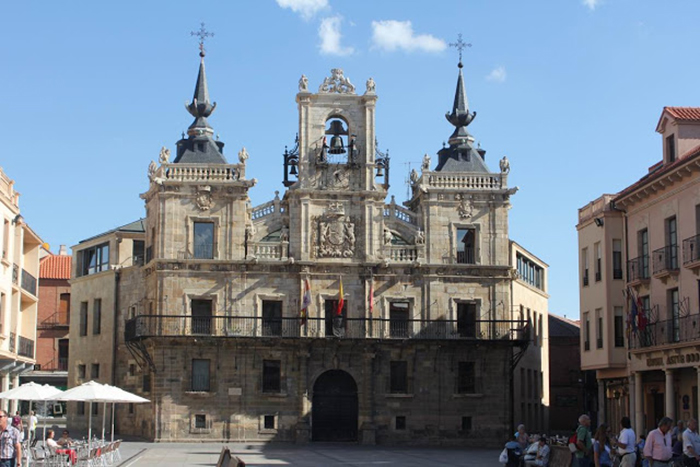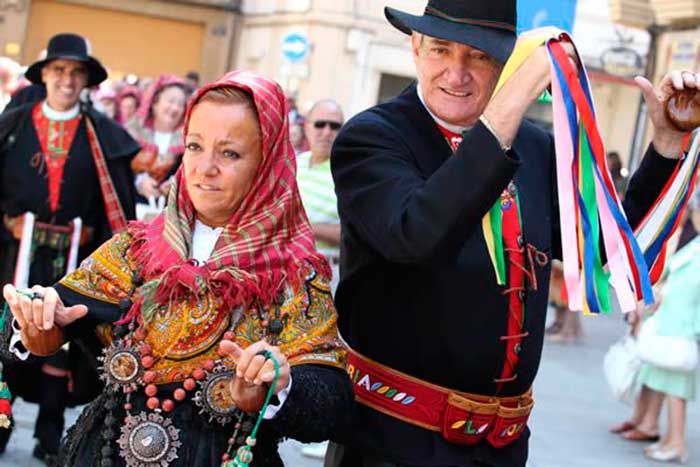Astorga is the traditional market town of the Maragatos, a distinct ethnic group of unknown origin, Marrying only among themselves, they maintained their traditions and individuality well into recent decades.

However, apart from the locally famous Maragato cocido – a typically hearty stew made with up to seven types of meat and sausage, plus chickpeas and cabbage – their only obvious legacy to Astorga is the pair of colourful clockwork figures dressed in traditional costume who jerk into action to strike the hour on the town-hall clock in Plaza Mayor.

The Maragatos are about 4,000 people who are believed to be the last Moorish people in Spain. They were descended from the Berbers of North Africa who crossed into the Iberian peninsula with the first Moorish incursions in the early eighth century.
The maragatos are spread over 40 villages in the greatly depopulated hills outside Astorga in Leon, northern Spain. After centuries of maintaining their identity and customs and prospering by monopolising Spain’s muleteer trade they are struggling to survive. In an attempt to remedy the decline in population and culture, the local government has launched tourist promotion schemes and introduced profitable forms of agriculture to encourage people to stay.
But it is perhaps those who emigrated who hold the key to the maragato future. Many founded food brands that have become some of Spain’s main business dynasties and some of these old maragato families have been encouraged to return and invest money to rejuvenate the culture.
The maragatos have mysterious origins and are known as one of the pueblos malditos, the damned peoples. Although their Moorish roots have been contested, they are believed to have converted at the time of the reconquista.
But, unlike other moriscos, converted Moors who blended into Spanish culture after the first expulsion of the Moors in 1492, the Maragatos preserved their identity.
They were first recorded in the area in the 10th century. They uses mules to transport fish to Madrid and ferry the Spanish monarch’s gold from place to place.
In the 1830s, one British traveller, Richard Ford, compared their insularity to that of the Jews and the gypsies. Like the Jews, they are renowned as traders and businessmen and their success has historically prompted jealousy.
Although they share their folklore, weddings and food with tourists, maragatos have a protective and distrusting demeanour that few penetrate. They play down any differences with their neighbours other than admitting that they eat backwards: taking soup after the main course.

A sympathetic observer described the courtship practices of the Maragatería. A suitor, by way of declaring his intentions, was required to lay down a trail of straw from the door of his house to the door of his intended, who, if her own fancy resided elsewhere, simply continued the trail down to the river. A Maragato woman, once won, according to Richard Ford, was a model of constancy. The Maragato bride, on her wedding day, wore a manto, a full length cape, never donning it again afterwards until the day of her husband’s death. Also worthy of note were the hearty appetites of the Maragatos. Newlyweds, before rising from their conjugal bed, were expected to consume between them, for their wedding breakfast, a pair of roasted chickens.

Carnival combined licence with custom. A Maragato gentleman
wishing to dance with a Maragato lady was obliged first to hook her by
the legs with a curved crook. The Maragato children, having gathered ants
from the fields, would let them loose on the dance floor so that they might,
as the dance progressed, crawl up under the Maragato ladies’ skirts.
So, if you are a pilgrim and you are hiking through Astorga on the Camino Francés, don´t miss the Maragatos tradition and culture.
Buen Camino,amigos!
Anxo Saco



Comments
Faride
Yes i have eating This delices food in Astroria.. When i was walking and now iam writting about my experiences Light and love dios ahjuda Spanija a hora… Amen
Dirk
It is traditional in parts of Portugal to eat soup after the main course at lunch.
Claudia
The information in this page about the origins of the Maragatos is inaccurate, as it is uncertain where they came from . Based on DNA tests, they have been defined as an isolated ethnic group in an article published in Nature (top scientific journal).